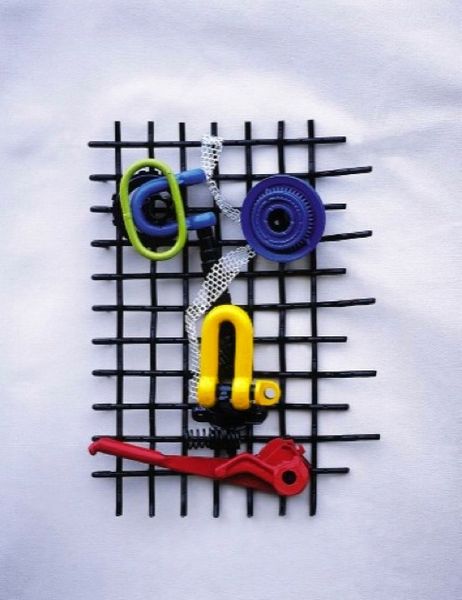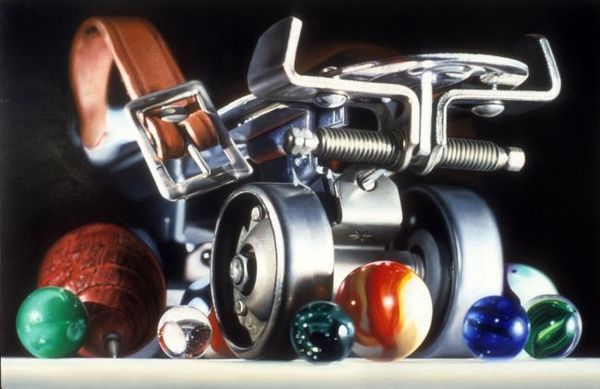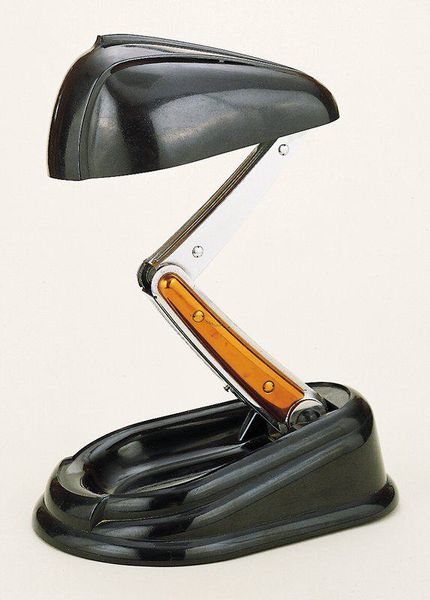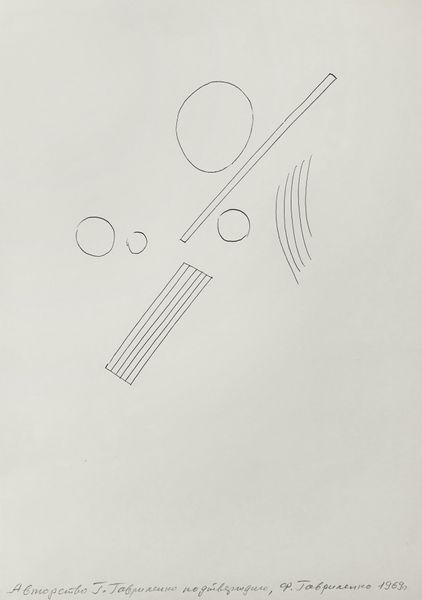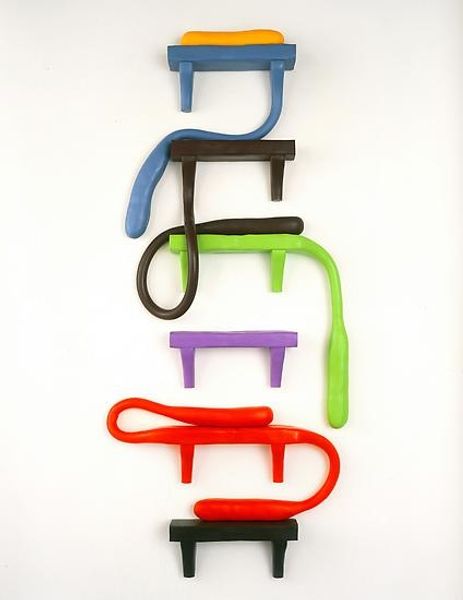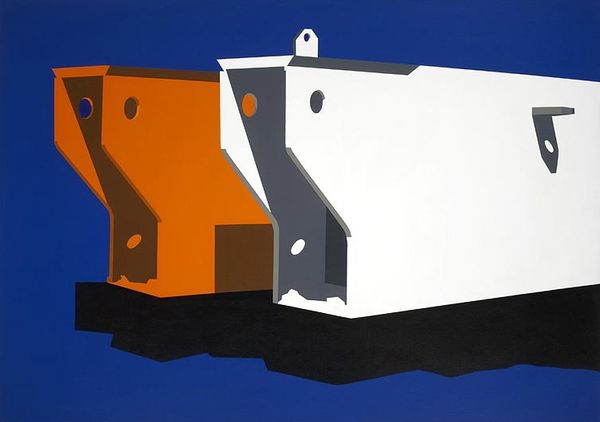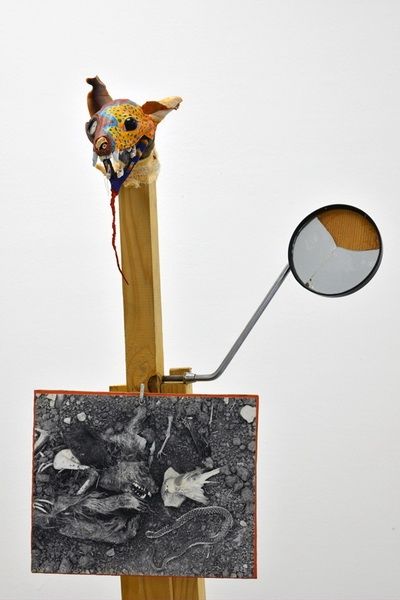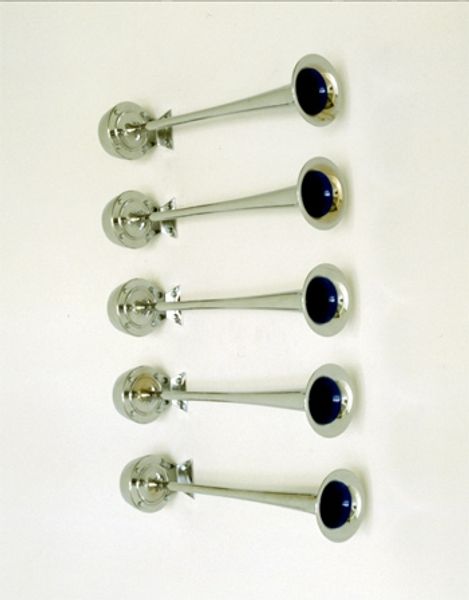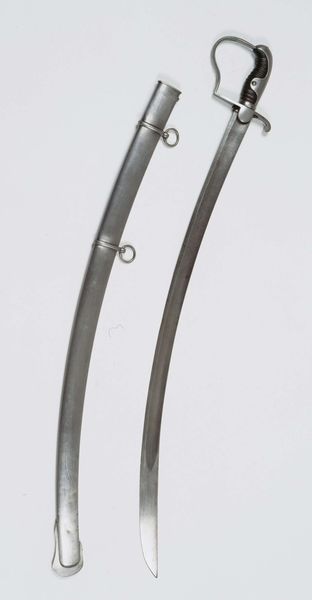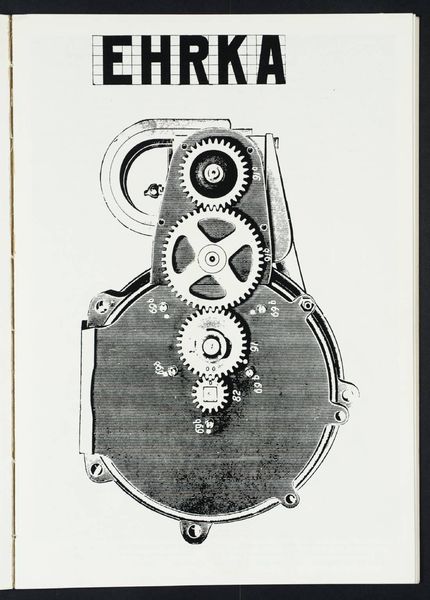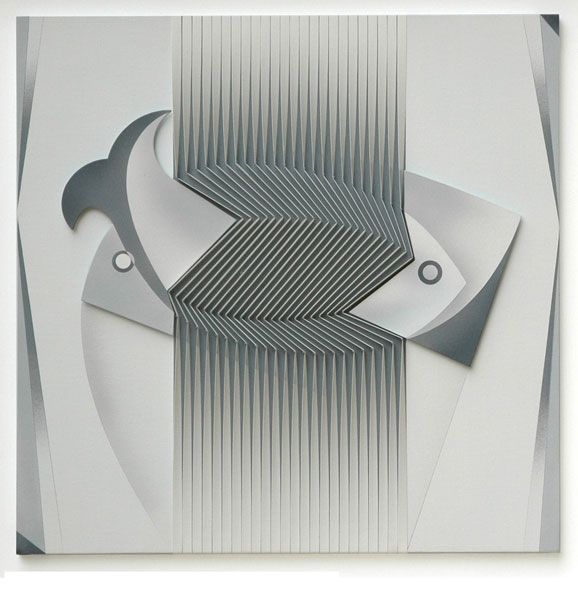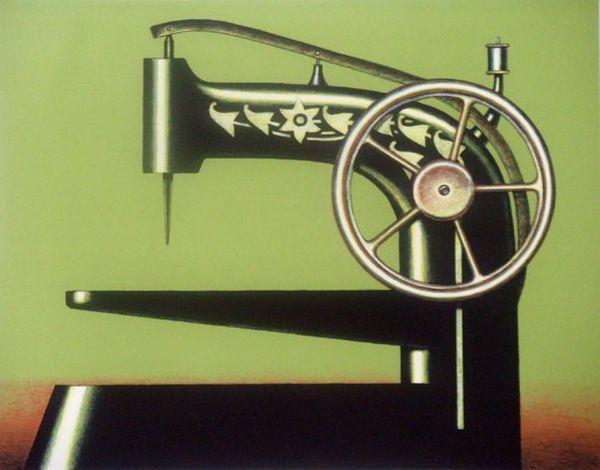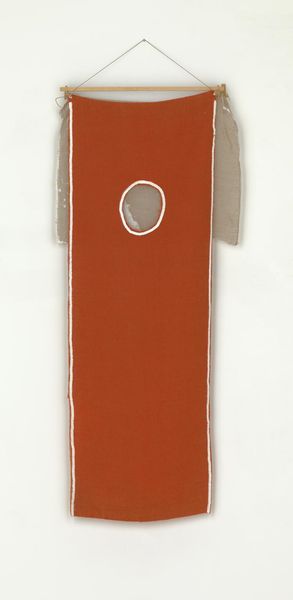
assemblage, metal, found-object, sculpture
#
abstract-expressionism
#
3d sculpting
#
3d image
#
assemblage
#
3d printed part
#
metal
#
sculpture
#
3d printing
#
jewelry design
#
found-object
#
sculptural image
#
3d shape
#
framed image
#
sculpture
#
technology juxtaposition
Copyright: Paul du Toit,Fair Use
Editor: This piece is an untitled assemblage sculpture by Paul du Toit, its date is unknown. Made from metal and found objects, the contrasting colours and layered mechanical components give the work a bold presence, as if sprung from the imagination. What elements of its visual composition stand out to you? Curator: The assemblage's vertical thrust is undeniable, punctuated by the strategic placement of colourful circular forms—gears, rings—that ascend toward what one might call a 'head' of stacked planes. Observe how the artist manipulates negative space; voids articulate the dense composition, inviting the eye to traverse and linger. Does the interplay between the readymade objects alter our perception of them individually? Editor: Definitely, the bright colours change their context. What do you think about the white geometric shapes near the top of the artwork? Curator: Those pristine white planes create a compelling dialogue with the grittier, more obviously 'used' components below. Are they disruptive, or do they harmonize? They operate as framing devices, accentuating the three-dimensional form while subtly referencing the two-dimensional picture plane. Do you see a connection between these planes and the flat background? Editor: Now that you point it out, yes, they do feel like they’re trying to break free. Is that contrast a form of commentary? Curator: Perhaps, but formalistically speaking, it reinforces the dynamic tension that propels the entire composition upward. This tension arises not only from the object's inherent materiality but also from their strategic arrangement and colour relationship. It suggests that through this strategic arranging of parts the artist suggests a state of continual becoming. What does this assemblage signify, if anything? Editor: Initially, I saw industrial elements reformed into an aesthetic piece, but your formal reading opened my eyes to considering depth and the dialogue between the different parts in their use of colour. Curator: Precisely. By analyzing intrinsic forms, relationships, and juxtapositions, we gain insights into not just what it is, but how it is, and ultimately, perhaps, why it is. The significance resides within.
Comments
No comments
Be the first to comment and join the conversation on the ultimate creative platform.
